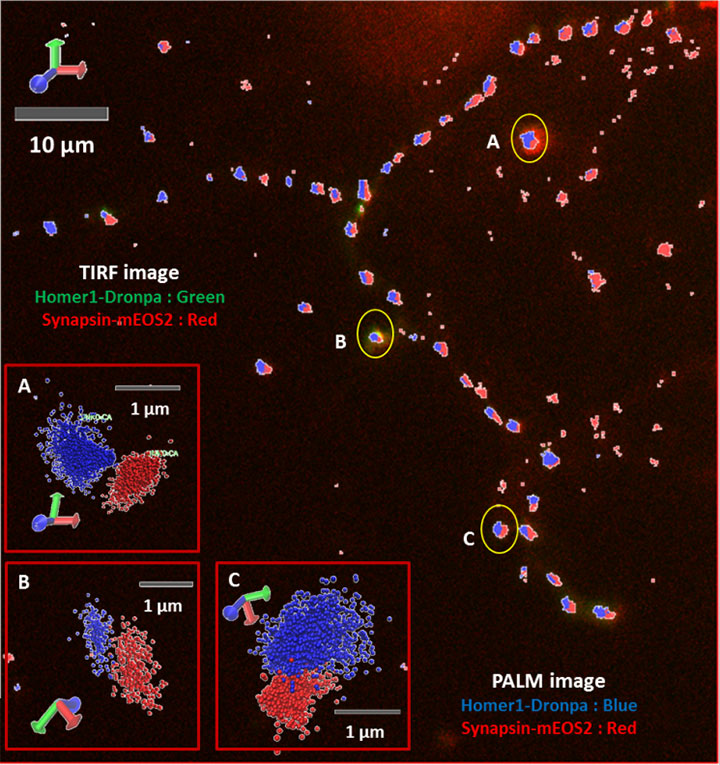Resources
 Part of the Oxford Instruments Group
Part of the Oxford Instruments Group
Expand
Collapse
 Part of the Oxford Instruments Group
Part of the Oxford Instruments Group
Challenge Background

Courtesy of Sang Hak Lee, En Cai & Paul Selvin, University of Illinois, Urbana-Champaign
It is often important to look at how multiple neurons function as part of the wider neural network rather than the dynamics and localisation of neuronal activity within individual nerve or glial cells. These types of experiments tend to be diverse in nature, often integrating a number of different methods, for example light-sheet microscopy and ion imaging, to help provide a more complete understanding of poorly characterised neural pathways or processes.
Imaging the wider network of cells is technically demanding in terms of the camera requirements. Not only do you need to have a wide field of view to show the interactions between neurons, but the specific detail of the cell signalling involved still needs to be resolved. Therefore this requires a detector that has as wide a field of view as possible yet has the resolution, the dynamic range and the sensitivity needed to reveal the underlying processes. Furthermore since events at the cell membrane are dynamic, occurring over milliseconds, we need to have a good frame rate performance to capture the temporal aspects of the processes.
Technology Solution
sCMOS based cameras offer larger field of view from larger format sensors than are typically found in CCD or EMCCD cameras. The new generation of sCMOS cameras with back-illuminated technology promise higher sensitivity – approaching that of EMCCD, yet avoid some of the shortcomings or complexity of this technology. These sCMOS cameras also promise exceptional sensitivity and the ability to handle dynamic images in the order of 100s of frames per second (fps).
Do you need the highest possible temporal resolution? Zyla 4.2 PLUS with Camera Link is our fastest camera solution. This is the detector of choice for experiments that require the fastest possible frame rates and still offers a good field of view.
Andor Camera Solutions for Wide field of View Neurobiology Studies
Andor recommend the Sona 4.2B-11 for neurobiology experiments where widest field of view and sensitivity is most important. Not only does Sona have a massive 32 mm FoV, it has a QE of 95%, extended dynamic range and runs in high speed mode at 48 fps at 2048 x2048. Speed can be boosted using ROIs e.g. 750 fps at 128x128, providing flexibility across varied experimental setups.
| Key Requirement | Sensitive and Wide Field of View Neurobiology Imaging Solution: Sona 4.2B-11 |
| Visualize interconnections of neural networks. | Sona 4.2B-11 has a 4.2 Megapixel format sensor with 11 micron pixels which provides an exceptional field of view of neural tissues. When used with the Nikon Ti2 it is possible to get a 32 mm FoV. Result – Enhanced understanding of cell signalling from multiple cells |
| Observe highly dynamic signals. | The extended dynamic range of 53 000: 1 means you get the full resolution of your image – without this ability it is not possible to visualise the details for both excited and unexcited cell states. Result – Resolve both background cell detail as well as high signal level information in one image. |
| Quantity image data regardless of signal intensity | Better than 99.7% Linearity means you can accurately quantify image data regardless of signal intensity. Result – Have confidence in your experimental data. |
| Record accurate physiology of in vivo studies using GECI and other markers. | Sona has exceptional sensitivity due to 95% QE and a low read noise of 1.6e- .This lets you reduce exposure times and fluorophore concentrations for less photobleaching and phototoxicity, preserving accurate physiology of the underlying cell signalling processes. Result – Obtain accurate physiological data for in vivo studies. |
| Low vibration capability | Sona has been designed for minimal vibration: water cooling can be used to all but eliminate vibration. Result – suitable for vibration sensitive techniques such as electrophysiology |
| Quality and longevity | Sona comes with Andor’s exclusive UltraVacTM vacuum sensor enclosure. The well proven permanent vacuum process is critical not only for cooling, but for protection of the back-illuminated sensor against moisture and condensates. Result – Sustained high performance, year after year. |
Do you need the highest possible sensitivity? The iXon Life EMCCD series feature single photon sensitivity as well as good frame rate performance making it suitable where ultimate sensitivity is of the upmost importance.
